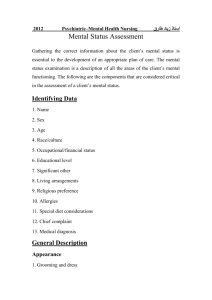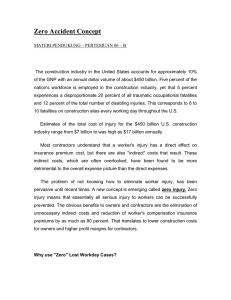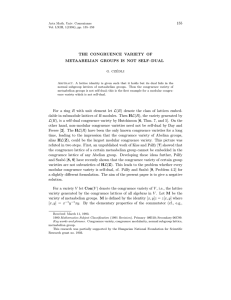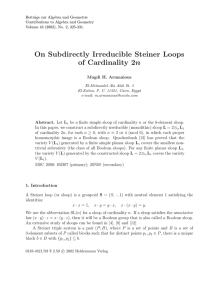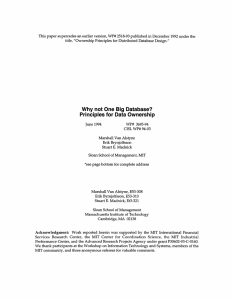Jennifer Launderville Lindsey McDonough Brittany Buckland
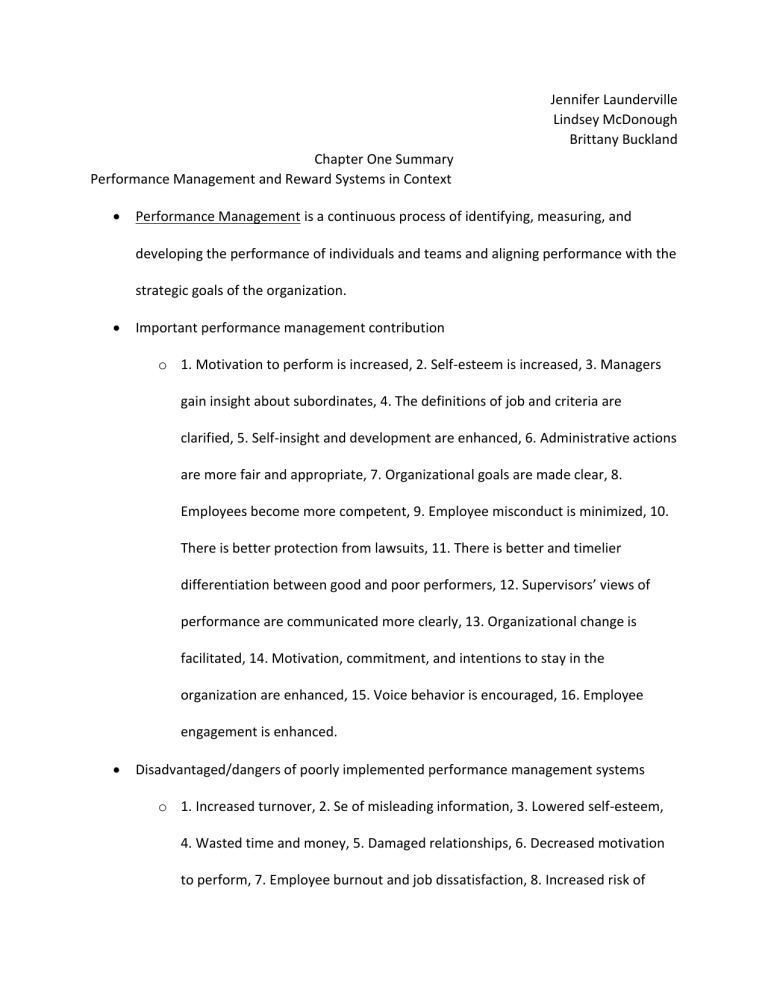
Jennifer Launderville
Lindsey McDonough
Brittany Buckland
Chapter One Summary
Performance Management and Reward Systems in Context
Performance Management is a continuous process of identifying, measuring, and developing the performance of individuals and teams and aligning performance with the strategic goals of the organization.
Important performance management contribution o 1. Motivation to perform is increased, 2. Self-esteem is increased, 3. Managers gain insight about subordinates, 4. The definitions of job and criteria are clarified, 5. Self-insight and development are enhanced, 6. Administrative actions are more fair and appropriate, 7. Organizational goals are made clear, 8.
Employees become more competent, 9. Employee misconduct is minimized, 10.
There is better protection from lawsuits, 11. There is better and timelier differentiation between good and poor performers, 12. Supervisors’ views of performance are communicated more clearly, 13. Organizational change is facilitated, 14. Motivation, commitment, and intentions to stay in the organization are enhanced, 15. Voice behavior is encouraged, 16. Employee engagement is enhanced.
Disadvantaged/dangers of poorly implemented performance management systems o 1. Increased turnover, 2. Se of misleading information, 3. Lowered self-esteem,
4. Wasted time and money, 5. Damaged relationships, 6. Decreased motivation to perform, 7. Employee burnout and job dissatisfaction, 8. Increased risk of
litigation, 9. Unjustified demands on managers’ and employees’ resources, 10.
Varying and unfair standards and ratings, 11. Emerging biases, 12. Unclear rating system.
Reward systems o Tangible returns – cash and benefits o Intangible returns (relational returns) – recognition and status, employment security, challenging work, and learning opportunities o Base pay – is given to employees in exchange for work performed (usually same for all employees) o Cost-of-living adjustments and contingent pay – imply the same percentage increase for all employees regardless of their individual performance. o Contingent pay (merit pay) – is given as an addition to the base pay based on past performance. o Short-term incentives – are allocated based on past performance. o Incentives – are one-time payments (variable pay) and are known in advance. o Long-term incentives – attempt to influence future performance over a longer period of time. o Income protection – programs serve as a backup to employees’ salaries in the event that an employee is sick, disabled, or no longer able to work. o Work/life focus- include programs that help employees achieve a better balance between work and nonworking activities. o Allowances
o Relational returns – intangible – they include recognition and status, employment security, challenging work, opportunities to form personal relationships at work, and opportunities to learn
Performance management systems can serve the following 6 purposes o Strategic purpose – to help top management achieve strategic business objectives o Administrative – to furnish valid and useful information for making administrative decisions about employees o Informational – to inform employees about how they are doing and about organization’s and supervisors’ expectations o Developmental – to allow managers to provide coaching to their employees o Organizational maintenance – to provide information to be used in workplace planning and allocation of human resources. o Documentational – to collect useful information that can be used for various purposes.
Characteristics of an Ideal Performance Management system o Strategic congruence, context congruence, thoroughness, practicality, meaningfulness, specificity, identification of effective and ineffective performance, reliability, validity, acceptability and fairness, inclusiveness, openness, correct ability, standardization, ethicality.


